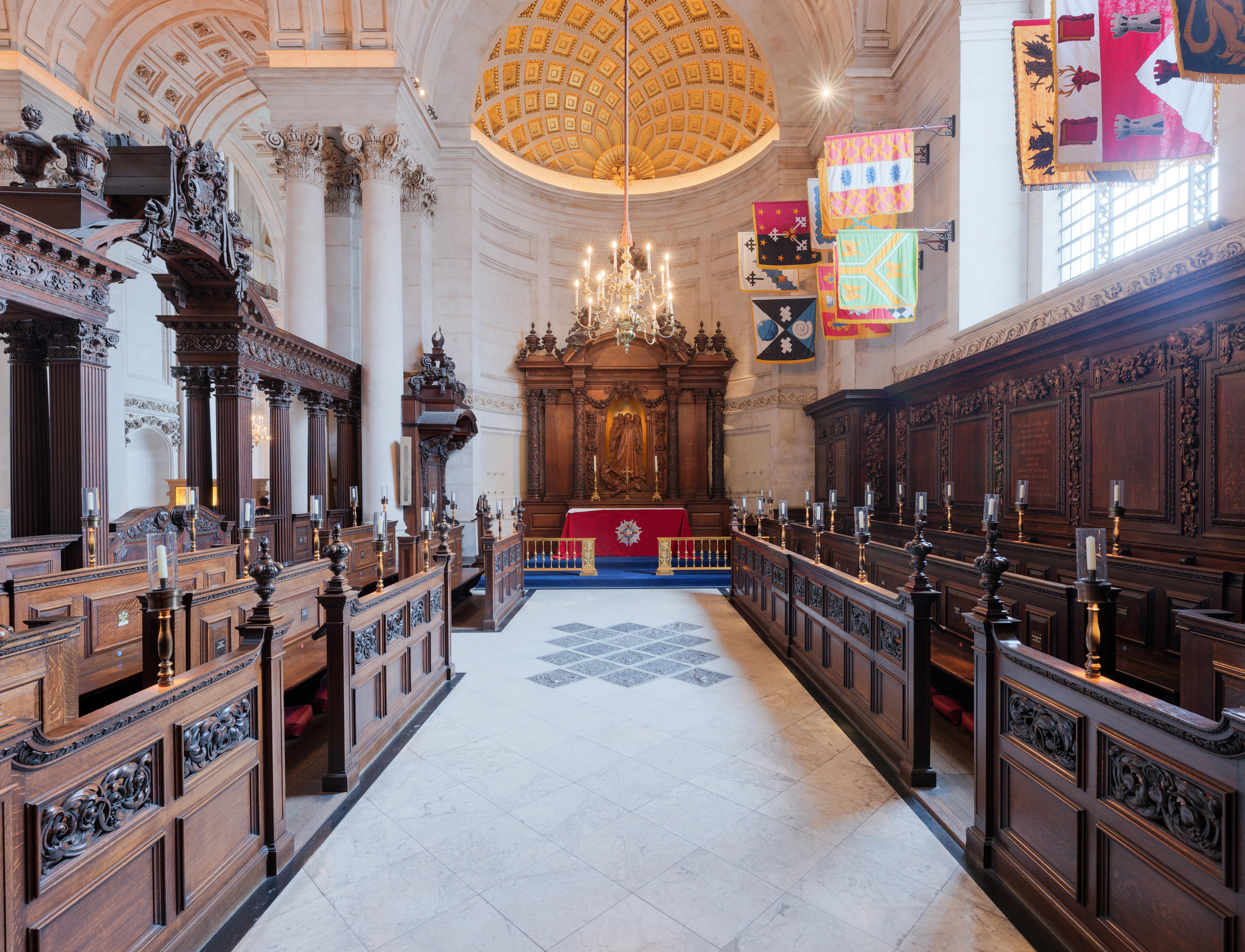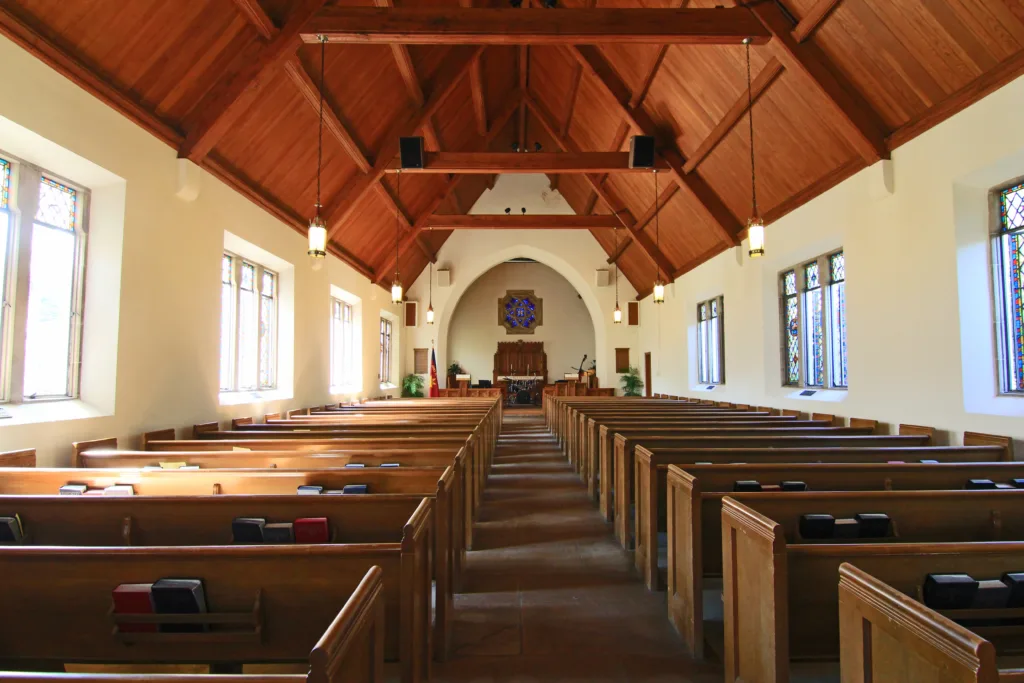Chapels are unique places of worship that differ from traditional churches in several ways. In essence, a chapel is a space dedicated to prayer and religious services, but it does not have a full-time pastor or a permanent congregation. Instead, its emphasis is on the physical space itself, which can vary in size and location.
Typically, chapels are smaller than churches and may consist of just a single room. They can be found within a larger church building, or they may be situated in secular places such as hospitals, airports, or educational institutions. While churches often serve a larger community, chapels are more intimate spaces that cater to specific needs.
One common type of chapel is the “chapel of ease,” which is associated with a main church or parish. These chapels provide a place of worship for people who live far from the main church, making it more convenient for them to attend religious services. In this context, chapels serve as satellite locations that bring the church closer to the community.
Another type of chapel is the private chapel, which is often found within a residence or institution. These chapels are typically reserved for the use of a specific family or religious group, allowing them to practice their faith in a more personal and private setting. Private chapels can be seen as extensions of larger religious institutions, providing a dedicated space for worship and reflection.
In some cases, a chapel may be a separate building or a detached room within a larger structure. These chapels are consecrated spaces that feature an altar and are specifically designated for religious activities. They may be used for small religious services, meditation, or prayer, providing a serene environment for individuals seeking spiritual solace.
Chapels can also be found in unexpected places, such as airports or hospitals. These spaces are often created to accommodate the diverse spiritual needs of travelers or patients. Airports, for example, may have chapels where people can find solace and engage in personal prayer before or after their journeys. Similarly, hospitals may have chapels to offer comfort and support to patients and their families during difficult times.
Chapels serve as unique places of worship that prioritize the physical space over a permanent congregation or clergy. Whether they are part of a larger church, privately owned, or situated in secular settings, chapels provide individuals with a quiet and contemplative environment to connect with their faith and seek spiritual guidance.
What Is Difference Between Church And Chapel?
A church and a chapel are both places of worship, but they have some key differences. Here are the main distinctions:
1. Size: Typically, a church is larger than a chapel. Churches are often grand and spacious, designed to accommodate a large congregation, while chapels are usually smaller, sometimes just a single room.
2. Purpose: A church is usually associated with a specific religious denomination and has a permanent congregation. It is led by a pastor or priest who conducts religious services, administers sacraments, and provides pastoral care to the community. In contrast, a chapel does not have a permanent congregation or a designated religious leader. It is primarily a physical space for worship and prayer.
3. Location: Churches are often standalone buildings dedicated solely to religious activities. They may have additional facilities like classrooms, offices, and meeting rooms. On the other hand, chapels can be found in various locations, both religious and secular. They can be part of a larger church complex, located within hospitals, schools, airports, or even in private residences.
4. Affiliation: Churches are typically affiliated with a specific religious denomination, such as Catholic, Protestant, or Orthodox. They adhere to the doctrines and practices of that particular faith. In contrast, chapels may be non-denominational or have a more inclusive approach, welcoming people from different religious backgrounds or no religious affiliation at all.
5. Rituals and Services: Churches often hold regular services, including Sunday worship, baptisms, weddings, and funerals. They may also offer religious education programs and community outreach activities. Chapels, on the other hand, may host occasional religious services, prayer meetings, or small gatherings for specific events or occasions.
It’s important to note that these differences can vary based on cultural and regional practices, and there may be some overlap between the two. Nevertheless, the distinctions mentioned above provide a general understanding of the dissimilarities between churches and chapels.

What Is A Chapel Meant For?
A chapel is a subordinate or private place of worship that serves various purposes. It can be found within a residence, institution, or as a separate small house of worship associated with a larger main church. The primary function of a chapel is to provide a space for religious services, meditation, prayer, and worship.
Here are some specific purposes for which a chapel is meant:
1. Worship: Chapels are designed to facilitate religious worship for individuals or small groups. They offer a more intimate and secluded setting compared to larger churches, allowing for a more personal and focused spiritual experience.
2. Residence or Institutional Worship: In some cases, chapels are built within residences or institutions such as schools, hospitals, or military bases. These chapels provide a convenient place of worship for residents, students, patients, or personnel within these establishments.
3. Meditation and Prayer: Chapels often have a quiet and peaceful ambiance, making them suitable for meditation and prayer. People can visit chapels to find solace, reflect on their faith, and seek spiritual guidance.
4. Small Religious Services: Chapels can host small religious services such as weddings, baptisms, funerals, or daily prayers. These services are usually more intimate and personal, catering to smaller congregations.
5. Religious Education: Some chapels serve as spaces for religious education and instruction. They may be used for teaching religious classes, conducting seminars, or holding study groups.
6. Contemplation and Reflection: Chapels provide a serene environment for individuals to contemplate, reflect, and find inner peace. Many people visit chapels for moments of introspection, seeking guidance, or finding answers to life’s questions.
A chapel is a place of worship, prayer, meditation, and reflection. It serves as a smaller, more intimate alternative to larger churches and offers a variety of religious services and experiences.
What Is The Chapel Part Of A Church?
The chapel is a distinct section within a church that is designated for private prayer and worship. It is typically smaller in size compared to the main sanctuary or nave of the church, and it often has its own altar. The chapel serves as a dedicated space for individuals or smaller groups to engage in personal religious activities.
Key features of a chapel include:
1. Altar: The chapel usually contains its own altar, which is a raised platform or table used for religious rituals and offerings.
2. Seating: Chapels may have limited seating arrangements, often in the form of pews or chairs, to accommodate those seeking a quiet and intimate space for prayer.
3. Decoration: Chapels are often adorned with religious artwork, statues, stained glass windows, or other decorative elements that reflect the particular religious traditions of the church.
4. Privacy: Unlike the main sanctuary, chapels provide a more secluded and private environment, allowing individuals to worship or meditate without distractions.
5. Purpose: Chapels are designed to facilitate personal prayer, meditation, and contemplation. They may also serve as locations for smaller religious ceremonies such as weddings, baptisms, or funerals.
A chapel is a distinct area within a church that provides a dedicated space for private prayer and worship. It typically features its own altar, limited seating, religious decorations, and offers a quiet and intimate atmosphere for individuals seeking personal spiritual experiences.
What Is A Chapel In The Catholic Church?
A chapel in the Catholic church is a place specifically dedicated to liturgical worship for a private or religious family. It can take the form of an oratory within a larger building or a separate room or building with its own consecrated altar. Chapels are typically smaller in size compared to the main church and often serve as a more intimate space for prayer and worship.
Here are some key points about chapels in the Catholic church:
1. Purpose: The primary purpose of a chapel is to provide a designated space for religious worship within a larger institution or community. It offers a more personal and focused environment for prayer, reflection, and celebration of the Eucharist.
2. Size and Structure: Chapels are typically smaller in size compared to the main church. They can be housed within a larger building, such as a school, hospital, or monastery, or may be standalone structures. Some chapels are specifically built as pilgrimage sites or dedicated to a particular saint or religious order.
3. Altar and Sanctuary: Every chapel has a consecrated altar, which is a sacred space where the Eucharist is celebrated. The altar is the focal point of the chapel and represents the presence of Christ in the sacrament of the Eucharist. The sanctuary area around the altar is often adorned with religious artwork, statues, and candles.
4. Types of Chapels: There are various types of chapels within the Catholic church, including side chapels, votive chapels, funeral chapels, adoration chapels, and family chapels. Side chapels are located on the sides of the main church and are dedicated to specific saints or devotions. Votive chapels are dedicated to offering prayers of thanksgiving or petition for specific intentions. Funeral chapels are often found within cemeteries or funeral homes and are used for funeral services. Adoration chapels are dedicated to the practice of Eucharistic adoration, where the Blessed Sacrament is displayed for worship and prayer. Family chapels are private chapels owned by families or religious communities.
5. Liturgical Events: In addition to regular Masses, chapels may host other liturgical events, such as weddings, baptisms, and funerals. These events are typically more intimate and allow for a closer connection between the participants and the liturgy.
A chapel in the Catholic church serves as a dedicated space for worship, prayer, and sacramental celebrations. It provides a more intimate and personal setting for religious devotion and is often associated with specific saints, devotions, or religious communities.

Conclusion
Chapels are distinct places of worship that differ from traditional churches in several ways. They are typically smaller in size, often consisting of just a single room or recess within a larger building. Unlike churches, chapels do not have a permanent congregation or a designated pastor or priest. Instead, they serve as a space for private prayer, meditation, and small religious services.
Chapels can be found within larger churches, serving as a subsidiary or private place of worship. They may also be associated with residences or institutions, such as hospitals or airports, where individuals can seek solace and engage in personal spiritual practices. In some cases, chapels may even be separate, consecrated structures with their own altars.
These intimate spaces provide a quiet and contemplative atmosphere for individuals to connect with their faith on a more personal level. Whether it’s for individual prayer, small religious gatherings, or moments of reflection, chapels offer a place of solace and spiritual nourishment.
Chapels play a vital role in providing a sacred space for individuals to seek spiritual solace and carry out their personal religious practices. Their unique characteristics and purpose make them distinct from larger churches, emphasizing the importance of creating an intimate and peaceful environment for personal worship and reflection.
